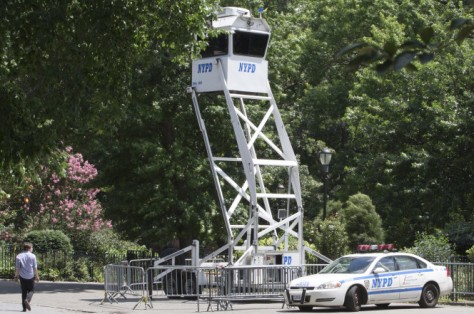Johanna Francis
PWR 1: Containment Rhetoric
Shannon Hervey
October 2, 2017
Farisch’s Disaster and Decentralization
“The marking of certain groups as un- American suggested not only that they represented a direct internal threat to the national body, but also that they could be geographically contained, placed against and outside of a patriotic ‘heartland geography’.9” (Farish 126).
In his 2003 paper, Disaster and Decentralization: American cities and the Cold War, Matthew Farisch discusses the role that America’s geography and population breakdown played in exacerbating containment rhetoric during the Cold War. The quote above refers back to George Kennan’s Foreign Affairs article “The sources of Soviet conflict”, which is thought to have been the instigator of formal containment rhetoric in America. I found this quote particularly interesting in its reference to America as a body throughout which the “disease” of Communism could potentially spread. The reference to the “heartland” is a very astute rhetorical choice because it implies that should Communism spread to suburban and rural American, it would stop the country’s heart, thus leading to the death of America and its values. Though the “heartland” is a fairly frequently used term, I had never thought of Middle America within the context of America as a whole body, with the country’s “heart” as the most crucial component of its survival. The discussion of the American heartland connected nicely with Farisch’s assertion that cities felt the most anxiety over the always-looming threat of atomic bomb. The heart is typically associated with emotions in a figurative sense; in reality, it simply pumps blood in order for the body to survive. Within the context of containment rhetoric, it seems as though Farisch is implying that rural and suburban Americans should continue to uphold idealized American values as a unit while their urban counterparts became anxious and disorganized.
From America’s attacks on Hiroshima and Nagasaki onwards, the immense power of nuclear weapons and their potential for mass destruction, especially within crowded cities, has lingered in American minds. Though 9/11 did not involve nuclear weapons, the idea that someone could attack New York City, a hallmark American metropolis, was incredibly disturbing. Modern media did not help Americans overcome the very understandable anxiety that they were feeling over their country’s newfound vulnerability. 9/11 created a dramatic binary of evil terrorists and heroic and innocent Americans. This narrative quickly became television ratings gold. Americans could not look away from the constant coverage of the attacks, and how could they? 9/11 represented a deep seated fear of metropolitan terrorism that had been lingering since the Cold War and played in with the containment rhetoric that had really been present ever since. Television coverage made it virtually impossible to move on from the awful events of 9/11, priming Americans to feel an even further exacerbated sense of paranoia and become highly receptive to any kind of authority figure.



